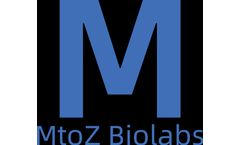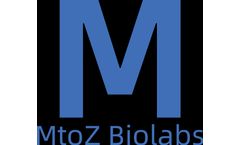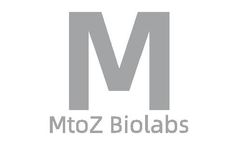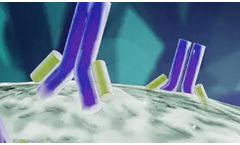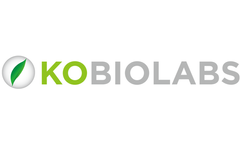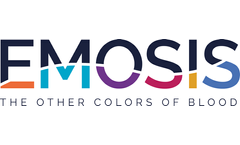Flow Cytometry Articles & Analysis: Older
23 articles found
It provides information on the hydrodynamic radius and polydispersity index, which are critical parameters for ensuring the stability and homogeneity of ADC formulations. Flow Cytometry Flow cytometry allows for the assessment of ADC binding to target cells and the subsequent delivery of the cytotoxic payload. ...
To find antibodies that can be used as therapeutic antibodies or effectively applied in ELISA, flow cytometry, and blocking assays, we urgently need to design a peptide that can accurately mimic the structure of natural proteins.In the design process, considerations need to be made for the known structure, predicted structure of the target antigen, and practical ...
Linear epitopes are suitable for use in protein blotting (Western Blot) and paraffin-embedded immunohistochemistry experiments, and native epitopes are more suitable for immunoprecipitation (IP), cryosection immunohistology, flow cytometry, and enzyme-linked immunosorbent assay (ELISA). In addition, those antibodies that can identify formalin-resistant epitopes ...
Experimental VerificationExperimental methods (such as ELISA, flow cytometry, etc.) are used to verify the results of sequence analysis, as well as the impact of constant region changes on antibody function.Analysis of Antibody Constant Region ...
This assay labels the fragmented DNA with a fluorescent probe, allowing visualization under a microscope or by flow cytometry. Caspase Assay: Caspases are a family of cysteine proteases central to the execution of apoptosis. ...
Cell penetration experiments using flow cytometry confirmed the cell-selective uptake properties of the LipoSM-PROTAC platform, offering a new solution to mitigate adverse reactions in normal tissues or cells. ...
Its scientists can utilize high-content imaging, nanoparticle imaging, imaging flow cytometry, time-lapse imaging, and other techniques to image cell structure, cell migration, cell proliferation, pathogen infection mechanisms, and interactions between protein ...
Flow cytometry (FC) is an important tool for analyzing complex pathways and responses of single cells, which can track cell phenotypes and functions in multiple dimensions. ...
The CC50 value was determined using the “Sigmoidal, 4PL, X is log(concentration)” equation in GraphPad Prism. 2.9 Flow cytometry analysis For flow cytometry analysis, 6 × 105 Caco-2 cells were seeded per well in six-well plates (Greiner Bio-One, Kremsmünster, Austria) and incubated for 24 h at 37°C, ...
Nano-flow cytometry is a revolutionary technology that has the potential to transform early disease detection and diagnosis. ...
Contexte Myasthenia gravis (MG) is an autoimmune disease caused by the presence of antibodies directed against components of the muscle membrane located at the neuromuscular junction. In the majority of cases, these are autoantibodies directed against the acetylcholine receptor (AChR). The origin of the autoimmune response is not known, but thymic abnormalities and defective regulation of the ...
Prilic, Mair, and Erikson employed novel methods, which included high parameter flow cytometry and Ozette’s foundational technology–full annotation using shape-constrained trees (FAUST). FAUST is a machine learning algorithm that discovers and annotates statistically relevant cellular phenotypes in an unsupervised manner. Pairing high parameter ...
To dig up clues in the blood, the authors used a technique called flow cytometry. Flow cytometry is a tool that rapidly analyzes the properties of individual cells as they flow through the laser. ...
I was fortunate to receive the SOT Supplemental Training for Education Program (STEP) award. With this award, I traveled to Sapienza Università di Roma in Italy, to the laboratory of Dr. Rita Businaro for what was intended to be a three-month training period focused on mesenchymal stem cells (MSCs), cells that modulate immune response and tissue repair. Dr. Businaro is an expert in MSCs ...
“About 60 years ago, a new technology called FCM — or flow cytometry — started to be used on large volume of blood from venous samples to do it automatically. ...
The numbers of eosinophils and mast cells were counted using Pannoramic Viewer software (3DHISTECH, Ltd., Budapest, Hungary). Flow cytometric analyses Flow cytometric analyses were carried out as described previously.46 Briefly, isolated MLN cells were stained with Fixable Viability Stain 510 (FVS510; BD bioscience, Franklin Lakes, NJ, USA) for live cells, as ...
The relative expression levels of each cytokine or chemokine were calculated using the 2−ΔΔCT method and normalized to the expression levels of hypoxanthine-guanine phosphoribosyltransferase (HPRT), as described previously (Livak and Schmittgen, 2001). Flow Cytometry Analysis in Treg Populations Flow ...
Results are then reported with a high delay, and not useful for the immediate management of affected patients. The new Flow Cytometry functional assay introduced, Emosis HIT Confirm®, overwhelms these limitations, and allows using this functional assay, on demand, in any site equipped with a flow cytometer. ...
Non-toxic concentrations of CA, RA, TCA, PCA, and HPA were tested for radiation protection, γ-radiation induced intracellular reactive oxygen species (ROS) by flow cytometry and DNA double strand break in human keratinocytes (HaCaT cells) by immunocytochemistry. ...
The susceptibility of individual bacterial cells to chlorine was examined using flow cytometry. The inactivation of Escherichia coli cells by chlorine in the populations with specific growth rates of 0.2 and 0.9 h−1 was assessed using various viability indicators. ...


